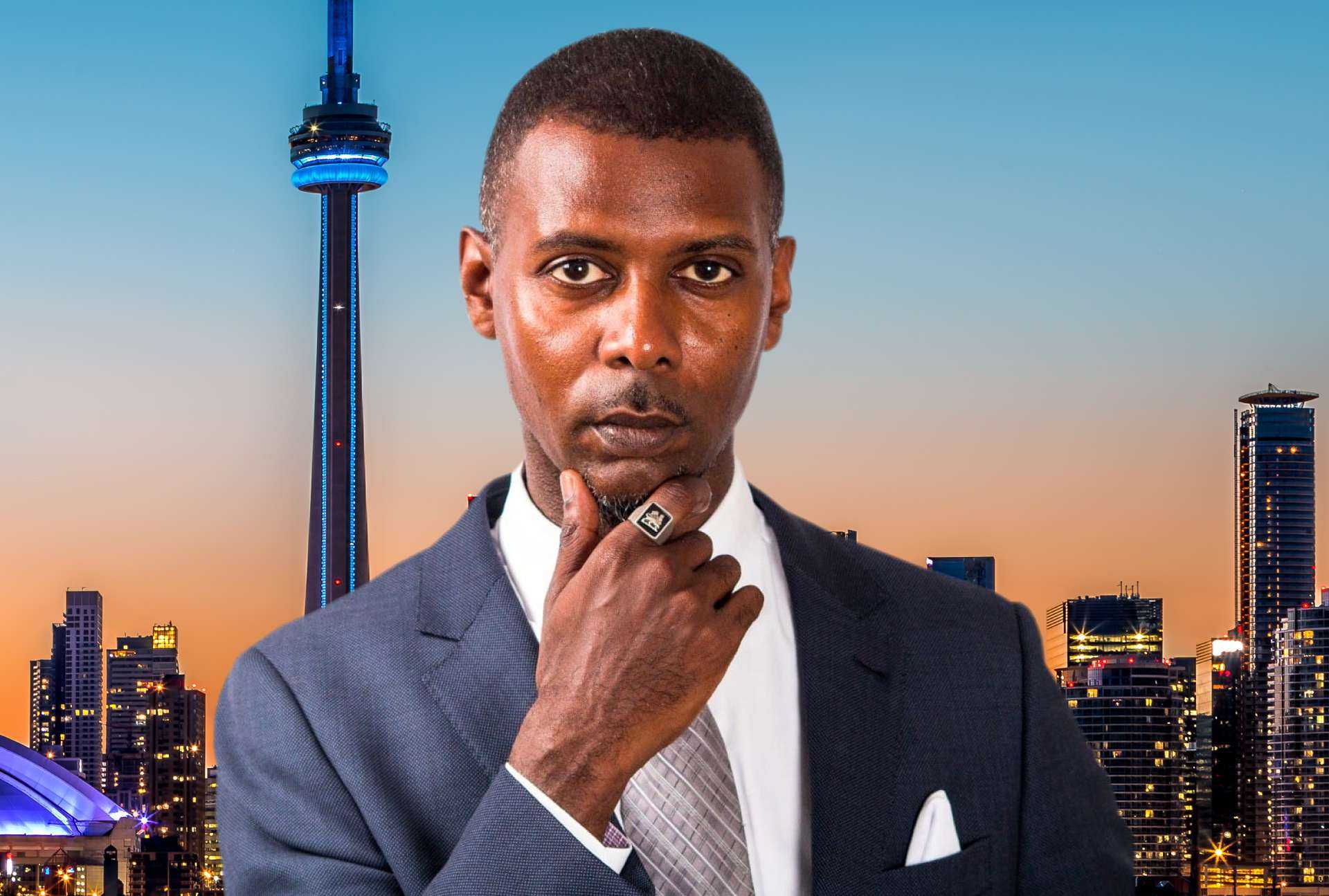on
BY SIMONE J. SMITH
“Any time you see a police officer your heart races and you feel like you’ve done something wrong. You just want to avoid them. You know you’re in for a bad time. And really our response to police officers should be feeling safe, feeling secure, knowing someone is there if we need them. For the African-Canadian and, I think, First Nations communities, that’s not the experience when we see police.”
Last week I had the opportunity to introduce a man who really does not need the introduction. As a lawyer, and server of his people, Knia Singh has stepped forward as the African-Caribbean community’s superhero. When you get a chance, or if you can pick up a paper, you definitely need to read up on the greatness of this man.
This week, we are going to deep dive into the life of this great man, learn a little more about what makes him tick, and discover the very roots of his passion.
The Man, The Lawyer, The Legend!
“I was born in Toronto, Ontario, Canada,” Knia began. “My dad is Indian-Guyanese, and my mom is African/Bermudian. I grew up around the Don Valley Parkway area, close to Fairview Mall.
My parents bought a house in the Northeast end of the city, and to be honest, I didn’t rep anywhere; I didn’t like how where you were from could pit you against other people. I just represent Toronto. The divisions didn’t really work for me.”
Knia tells me that his fondest memories of school were reading to the grade two classes when he was in kindergarten.
“My mom used to sit with me and read a lot; this made me a proficient leader. I had a sense of purpose very early in my life. I attended a private school that had a daycare built in, and everyone would praise me on my intelligence. I think it was due to the fact that I got a lot of attention. I learned how to respect women, not to mistreat them. My dad was active in our lives; he did everything my mom was doing. I learned from my parents how to be a good human.”
In grade three, Knia’s mom put him in public school. When he attended Forest Manor Public School, he was already a year ahead. They had gifted testing, and he passed.
“My best friend didn’t get in, and I didn’t want to be separated,” Knia shares, “So I refused to go. What is surprising is that my parents allowed me to make that choice. I value that because what if I went to that gifted school? I wouldn’t have experienced what I have in my life, and I would have been disconnected from who I am now.”
He ended up at Don Valley Junior High, and in his ninth year, Knia went through an experience that changed his life forever.
“It was a New Year’s Eve party, and I will never forget the night. My dad was severely assaulted and ended up with blood clots. He was in a coma for two weeks. That changed my world. My dad was going to night school, he was moving up in his career, and my mom was doing really well. It was a lot. Part of me blocked some of it out.
Things changed for me in school. I wasn’t doing as well. This is when music entered my life in a major way. I come from a musical family, and at the age of 16, a guy approached me on a bus. It was very random. He asked if I could dance, and I said yes! I created a crew and we danced. I was dancing on Scarborough cable. Another rapper needed dancers, so our crew became back-up dancers. In 1991, we got an offer to go to Indonesia. I got permission from my parents and from school, and we toured for a month. It was not as glamorous as you think.
When I came back, I asked to come to the studio, and they would not let me. I decided that I was going to do it on my own. I applied for a student loan, because I was going to college, and I created my own Hip-Hop studio. Word got out, and the next thing you know, my basement became the place to be. Students started doing co-op placements at my studio. Apparently, the school boards had heard about the work that I was doing.”
It was here that Knia began to hear about the injustices that Black students were going through.
“I started to stand up for these student rights. One of my artists was running for the bus, and the bus left him. He ended up kicking the door and was charged for it. When he had to go to court, he asked me to come. I went right up to the bench and asked to defend my friend. From there, I started writing reference letters, then people started asking me to represent them. I became the man.
I started to manage artists. They felt safe there. It wasn’t all about money, it was the art form. When my clients were waiting, I would give them books to read. My partner emphasized the importance of sourcing references and being able to back up your references.”
Knia recognized that he had something special, a way to represent his community, so when the boroughs were being brought together, he ran for city council. The election took place on November 10th, which happened to be his daughter’s birthday.
“I started to feel like I was in a reoccurring conundrum. Every artist that started to do well, would get arrested, or people were getting shot and killed.
In 2001 my mom was diagnosed with breast cancer, and the chemo affected the rest of her body. She then had a stroke, and she was not the same.” During this time Knia worked at Flow as a Production Manager, and then he opened his studio downtown. In 2009 he got a studio down by Cherry Beach. “I had been working so hard.” To add to that, in 2007 he started volunteering with Caribana, and in 2012 he became chair. This was all happening in the backdrop.
“In 2009, my dad passed away from a heart attack. I had to deal with that for a while. I was raising two children and working in the studio. It was too much for me at that time. Things were changing so I decided to give up the studio life and go back to school.
I owed it to my parents for giving me that stability. I had no initials behind my name, so people didn’t take me seriously. In 2010 everything came together. I began working as a legal assistant. I threw my hat in for the elections, and I was in university.
My good friend called me one day. I turned on CP24. My friend had a warrant out for his arrest for a shooting. My friend told me he didn’t do it. He told me to get the videotape from the store he was at that proved that my friend was not the shooter. I had to log into the system to show them the proof. My first murder acquittal happened before I was even a lawyer.”
Knia realized he could better serve his community as a lawyer. He realized that they needed representation.
“The first LSAT test I took, I got a letter saying that my scores were cancelled. They made up some story about me being on my device and bolting from the cameras. Thankfully the camera crew was there that disputed what they said. It showed the real story. I sent this back, and they said that they would reinstate my score. I had to do the test again. I didn’t report the first score, but they reported the second score. I applied to seven law schools and Osgoode was the only school that accepted me.
I had barriers leading up to it, during it, and after school. Within three weeks of law school, I was already in the papers. The rest is public.”
Knia had some final thoughts to share with the community.
“As a community, we need to start thinking critically; use what is in between your ears. Let’s start doing better for ourselves.”
Stay in the loop with exclusive news, stories, and insights—delivered straight to your inbox. No fluff, just real content that matters. Sign up today!
We, as humans are guaranteed certain things in life: stressors, taxes, bills and death are the first thoughts that pop to mind. It is not uncommon that many people find a hard time dealing with these daily life stressors, and at times will find themselves losing control over their lives. Simone Jennifer Smith’s great passion is using the gifts that have been given to her, to help educate her clients on how to live meaningful lives. The Hear to Help Team consists of powerfully motivated individuals, who like Simone, see that there is a need in this world; a need for real connection. As the founder and Director of Hear 2 Help, Simone leads a team that goes out into the community day to day, servicing families with their educational, legal and mental health needs.Her dedication shows in her Toronto Caribbean newspaper articles, and in her role as a host on the TCN TV Network.












